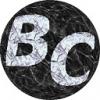So I just got done playing Little Inferno by Tomorrow Corporation, and I absolutely loved it. The algorithm they used for the fire combined with the physics of the smoldering debris matched the visual feel of fire so well, I couldn't distinguish what I was seeing from real fire. The pyromaniac within me is doing cartwheels.
So I was wondering, what algorithm were they using for the fire? There are definitely particles being used, but I'm not sure the fire is entirely comprised of just particles. It's very fluid and whole looking.
So, any thoughts on what they might be doing under the hood?







